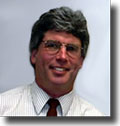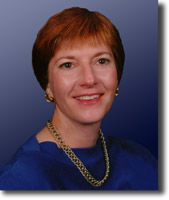“Share
and Compare Notes & Ideas:
Tools and Techniques for Estimating Projects”
This
lively event offered attendees the opportunity to find out how others
plan and estimate projects. Whether the work entails a single task or
an entire project, technical professionals and creative content developers
often see estimating as a formidable task fraught with uncertainties
and assumptions.
 Starting
with a project overview,
breaking it into smaller tasks and generating a project worksheet makes
the daunting task of estimating more manageable. Starting
with a project overview,
breaking it into smaller tasks and generating a project worksheet makes
the daunting task of estimating more manageable.
In
this relaxed and informative exchange, we pooled our wisdom and experience
to begin formulating a set of estimating “best practices,” which
are now being posted on our Web site. We
began with a round-robin during which attendees shared their most challenging
issues. Our presenters shared a wide range and years of experience to
answer many of these questions:
-
Estimating
is a time-consuming process. How do I make it more efficient and effective?
-
How
do I approach a customer for more $$ when the project plan is revised?
-
How
do I negotiate properly in the first place?
-
How
do I find the hidden costs and factor in the cost of consumables?
-
How
do I better define my deliverables from the outset?
-
How
can I persuade clients that my work is an investment, not an expense?
-
How
can I reduce my estimating stress?
-
How
do I determine guidelines for metrics and milestones?
-
How
much time do I estimate when it's a new kind of project or I have
inexperienced staff?
-
How
do I determine the value of time in each role on the project?
-
What
do I do when I underbid a project?
-
How
do I deal with the many unknowns and questions in the early stages
of a project?
-
How
do I justify the high cost of developing intangible products such
as software?
-
How
do I convince the client that time spent doing proper estimating is
not wasted?
-
How
do I handle fixed-bid contracts that must include an R&D component?
-
How
do I respond to a client who underestimates the amount of effort a
project will require?
-
Which
time recording strategies work best?
Here
are some highlights from the event:
Do
your research...
 Bruce
Mills, a returning marketing consultant and graphic and
media designer, presented a high-level comparison of two aspects
of project acquisition: selling one's expertise and doing
the actual estimating. Bruce explained that there is a balancing
act between sales and estimation. The goal of sales is to
get the business; the goal of estimating is to make it profitable.
In situations in which the client is asking for a solution
(rather than providing a specification), you must choose between
being price competitive or selling your value-added advantage
over price. Bruce
Mills, a returning marketing consultant and graphic and
media designer, presented a high-level comparison of two aspects
of project acquisition: selling one's expertise and doing
the actual estimating. Bruce explained that there is a balancing
act between sales and estimation. The goal of sales is to
get the business; the goal of estimating is to make it profitable.
In situations in which the client is asking for a solution
(rather than providing a specification), you must choose between
being price competitive or selling your value-added advantage
over price.
The
sales process should ensure that the requirements and expectations
are set correctly, that the client perceives the value of
the deliverables, and that the contingencies are understood
— all without compromising the potential margins or the
ability to close the sale.
In
the estimating process, Bruce recommends that you quantify
the deliverables and define the scope in detail. You would
next research the costs for all required tasks and expenses,
and apply realistic time buffers. A comprehensive contract
should include a stipulation that any changes or variables
not included in the original plan will be charged accordingly.
All of this should be outlined before work begins on a project.
Bruce's
primary suggestion: Put it in your contract! How you track
and bill any research and development time, the project specifications,
and the number and kind of allowable changes and variables
should all be included. Client approval is critical for a
successful project completion and accurate communication.
Bruce
Mills, marketing consultant and graphic and media designer,
http://www.lonepinestudio.com
|
| |
The
"Big Guys" vs. the "Little Guys"
 Mike
Lujan, a returning presenter, provided estimating and contract
insight based on 20 years as a primarily self-employed technical
communicator. His experience has demonstrated that the large,
established companies (like Intel, Hewlett-Packard, and Cisco)
usually know exactly what they want and how much they want to
pay. Mike
Lujan, a returning presenter, provided estimating and contract
insight based on 20 years as a primarily self-employed technical
communicator. His experience has demonstrated that the large,
established companies (like Intel, Hewlett-Packard, and Cisco)
usually know exactly what they want and how much they want to
pay.
Although
the larger companies tend to pay less than others, they do provide
much of the steady, available work, Mike explained. As a subcontractor,
he uses the client's specifications to develop a project proposal.
Then he compares what the client believes is a fair contract
rate for the project with a “fair market value” to more
effectively determine if it makes sense to consider the project.
He reminded us that if we don't want to take on a given project,
it's likely that someone else will.
In
contrast, Mike has observed that small companies often don't
know exactly what they want, what it's going to cost, or what
the result is worth. An independent technical communicator may
spend more time teaching these clients why they need various
services. Although these projects may require more work overall,
they tend to allow you to inject more creativity and personality
into the final deliverable — and you'll have more fun in
the process.
Mike
Lujan, technical communicator and SLO STC board member, http://www.mlujan.com
|
| |
|
Compile
your data...
 Cal
Poly Computer Science professor John Dalbey shared a set
of data collection and timekeeping worksheets designed for projects
with well-defined tasks and characteristics similar to those of
completed projects with stable requirements. John suggested we
all start keeping real data for our current projects so that historical
data can be used to estimate new ones. Cal
Poly Computer Science professor John Dalbey shared a set
of data collection and timekeeping worksheets designed for projects
with well-defined tasks and characteristics similar to those of
completed projects with stable requirements. John suggested we
all start keeping real data for our current projects so that historical
data can be used to estimate new ones.
Categorizing
your data properly is one of the keys to creating accurate bids
in the future, he explained. Examples of historically reliable
metrics include lines of code for software development.
John
posits that each new project can probably be boiled down to a
collection of known, discrete tasks that you have already performed
somewhere else. Most clients will respect you if you say “I
can always re-run the numbers if you want to make that change
to the scope” or some other aspect of the project. A quantitative
approach thus increases your professional status and credibility.
John
Dalbey, professor/lecturer in the Cal Poly Computer Science Department,
http://www.csc.calpoly.edu/~jdalbey/
John's
tools can be accessed via the link in the tools and handouts section
below.
|
| |
Communicate
clearly from the beginning...
 SLO
STC President and technical communication contractor Adele
Sommers presented a sample estimating worksheet as well
as a list of estimating tips and techniques. These documents
contain a variety of issues to consider when preparing an estimate
or service agreement. SLO
STC President and technical communication contractor Adele
Sommers presented a sample estimating worksheet as well
as a list of estimating tips and techniques. These documents
contain a variety of issues to consider when preparing an estimate
or service agreement.
Adele
suggests that documenting your estimating variables explicitly
can help control scope creep. Task breakdowns on service agreements
can be used to quantify the number of expected trips, reviews,
telecons, pages, modules, iterations, or anything else that
could characterize your project. Making healthy use of caveats,
constraints, and assumptions can help define the dividing line
between future in-scope and out-of-scope requests.
Another
key point: Sometimes a review process can take on a life of
its own, especially when several reviewers are providing conflicting
inputs, she observed. Whenever possible, regardless of the number
of reviewers, strive to establish a single client contact who
will have the final say on the content. If having a single approver
is not possible, try to factor in the anticipated number of
reviewers as an explicit component of your estimating formula.
Adele
Sommers, technical communication contractor and SLO STC president,
https://slostc.org
Adele's
handouts can be downloaded from the tools and handouts section
below.
|
| |
|
To
access tools and handouts: (Need
Acrobat Reader?)
The
following links are also available in our Web site's Library
of Best Practice Tools:
Recommended
Reading:
|
Photography
by Mary Meyer.
|